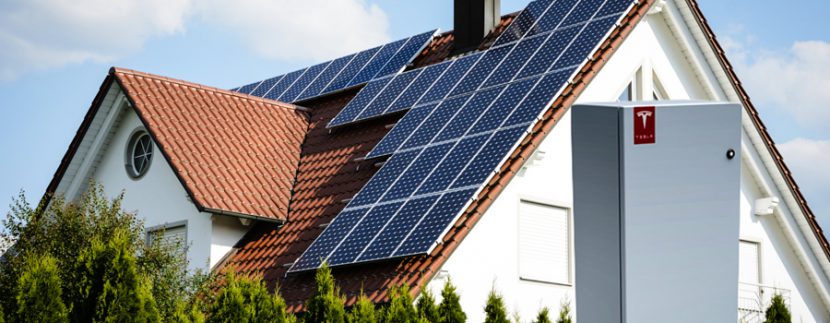The Tesla battery: the final solution for a greener home? (Part 1)

No, is not a bird, it’s not a plane, it’s a battery!! Mind you is not just any battery
According to recent statements by Jeff Evanson, one of the heads of Tesla, it will not only be a battery, but two. On the one hand, a battery focused for domestic use and the other one of higher storage capacity, scalable, and apparently would be more focused to the industry. Not only that: it seems that the first of them (the domestic battery) could also be rented in order to make it more affordable.
Let’s eliminate our electric bills.
To understand where the rumours come from, we must go back to a few weeks ago. In February, during a presentation to investors, Musk said that in the coming weeks the company would launch a battery designed for homes designed to eliminate once for all the electric bills. It was not a bluff, not a long-term project: The design is done, and should enter into production in by next month in August.
Why a battery and how it affects you.
To install electric solar panel at home is something that many can do. But it has two drawbacks: first it is expensive, (nothing much we can do about that) and depends on whether you are in a place with enough sun to be amortized. In our case, I presume that we are in the Costa so if we have anything here is sun and more sun. However electricity produced must be used immediately because if we store it isn’t easy or cheap.
For years, a form of efficient storage has been considered as the Holy Grail in the renewable energies. Solar panels and other forms of energy production are becoming more efficient, cheaper and more ubiquitous. One of the main problems with these energies, however, is that is not available on demand. Sometimes it’s sunny; sometimes it is raining for weeks. The bottleneck is therefore on an efficient method to store the energy produced for the time when the source is not available.
That has traditionally been expensive, very expensive and always has raised serious doubts about its repayment. Furthermore, the capacities of most current batteries are only for about 3 days. In the words of Musk, Tesla could supply the demands of an average home for about a week, same as the Toyota Mirai. Mirai is the Toyota car which can be supplied with hydrogen fuel cell and its battery can be removed and placed in a stand on the wall and provide electricity to the entire household if needed.
Li-ion or hydrogen?
Today there are two types of battery: hydrogen or Lithium Ion.
Hydrogen fuel cells are already used in some cars as the Audi A7 Sportback H-tron or the above mentioned Toyota Mirai. They have, however, an important limitation: Its price and the costs to process hydrogen. Although they have more autonomy than lithium-ion, its production and distribution are more expensive. That is, they are not as sustainable from an economic point from an energy point of view; I am referring to the energy it takes to produce and to transfer the hydrogen to the filling stations and from there to the cars.
On the other hand, there are lithium-ion batteries. They have allowed Tesla to position itself as a real threat to the traditional car taking into account its autonomy level. With the highest level of innovation seen in recent years, with its energy density that is growing year after year and with more efficient recharge systems.
As if that were not enough, Tesla is building right now in the middle of the desert Nevada his Gigafactory.
Gigafactory is the birthplace of these Tesla batteries. An interesting fact is that it is estimated that by 2020 Gigafactory will produce more storage batteries of this type that the whole world have produced during 2013. By 2020, it should charge the energy needs for half a million of Tesla cars.
If we must bet it seems that the lithium-ion has the winning hand in that type of technology.
Article sponsored by Pacheco & asociados architects

 Spanish
Spanish German
German Dutch
Dutch